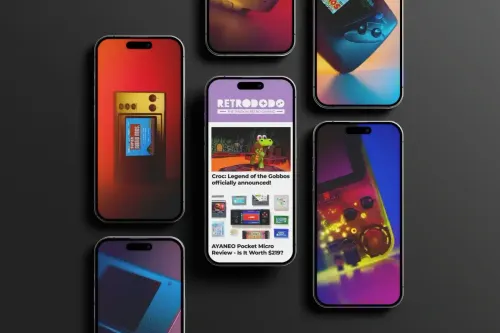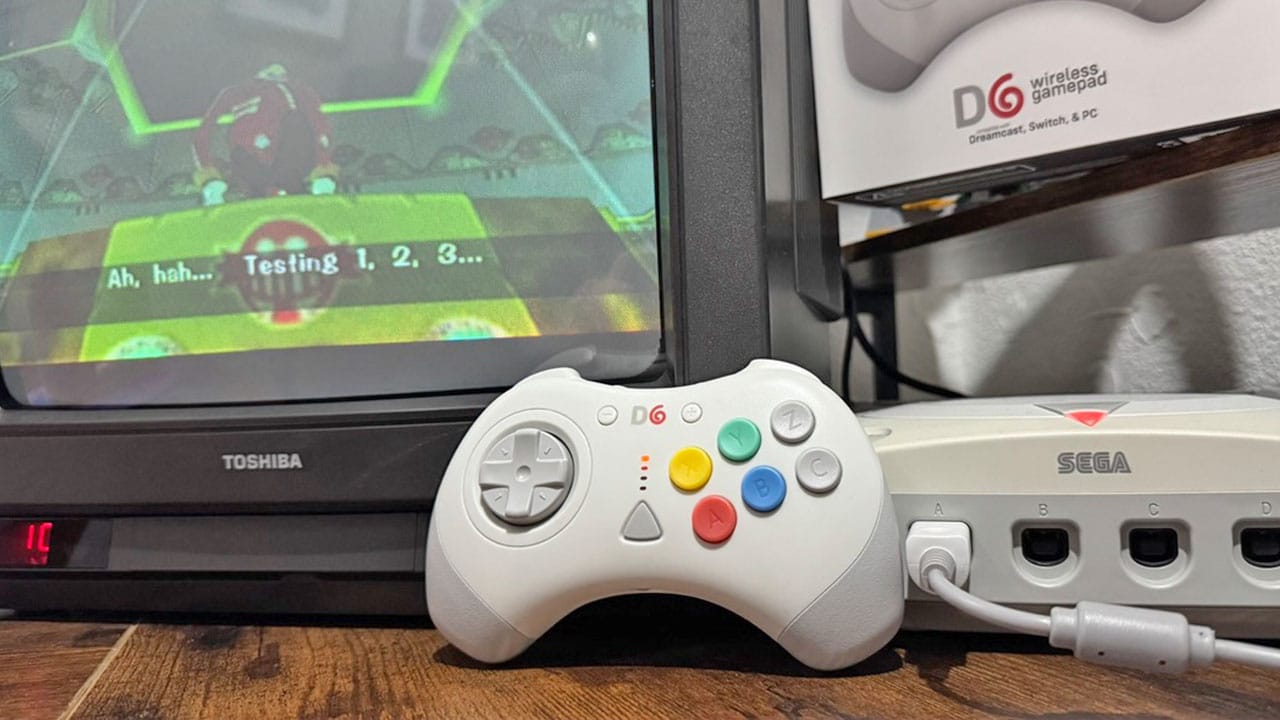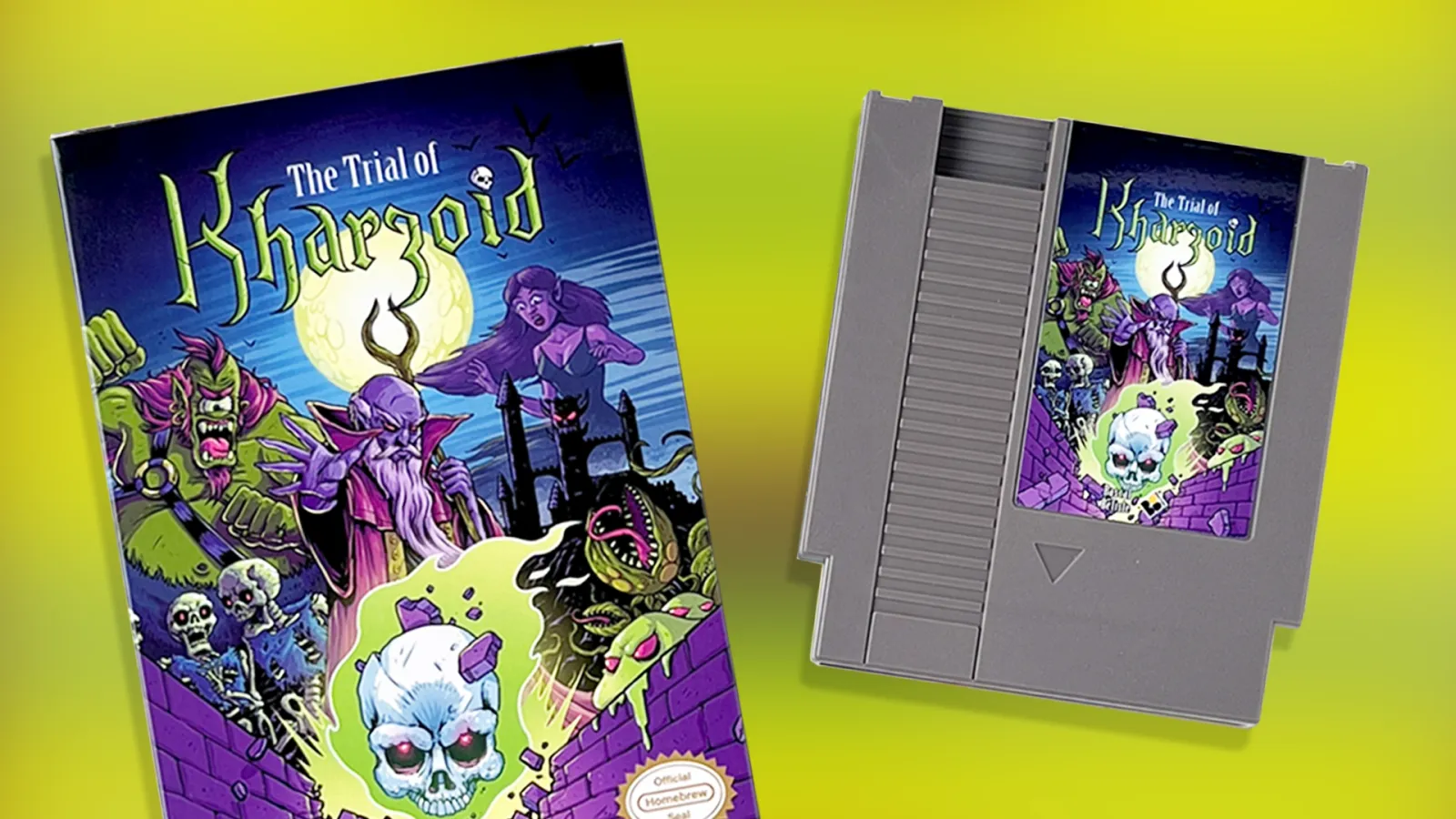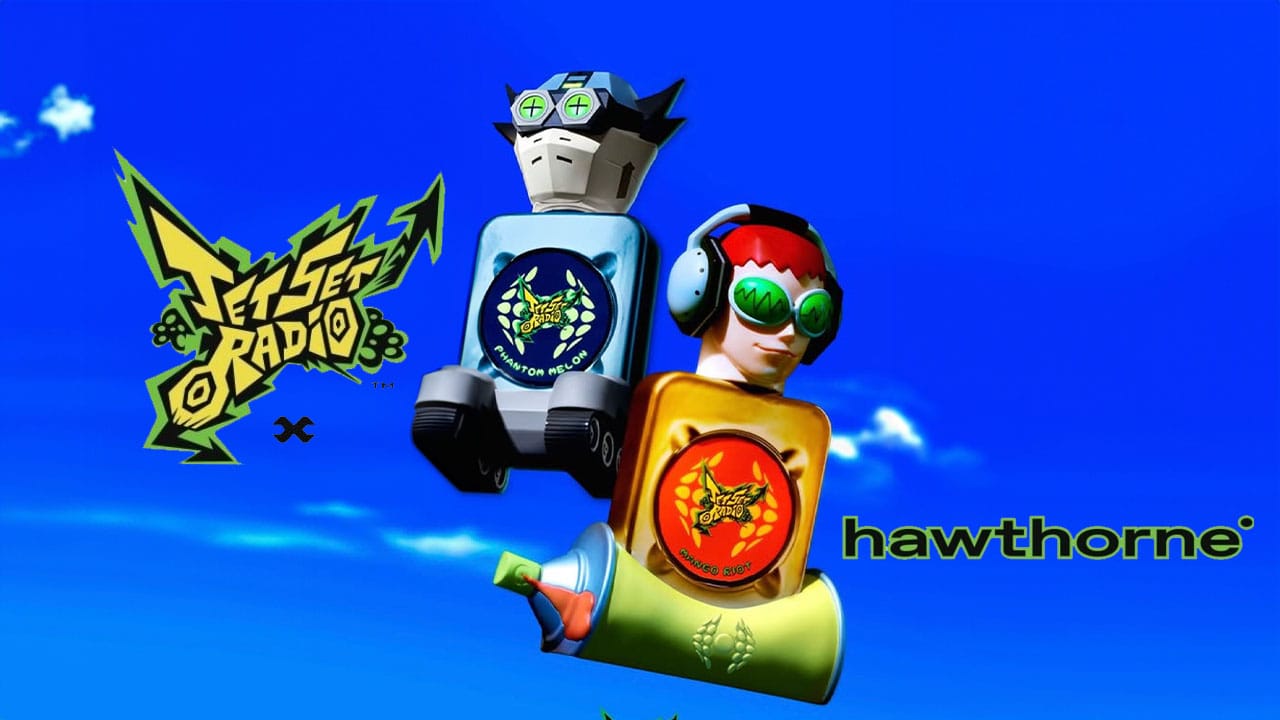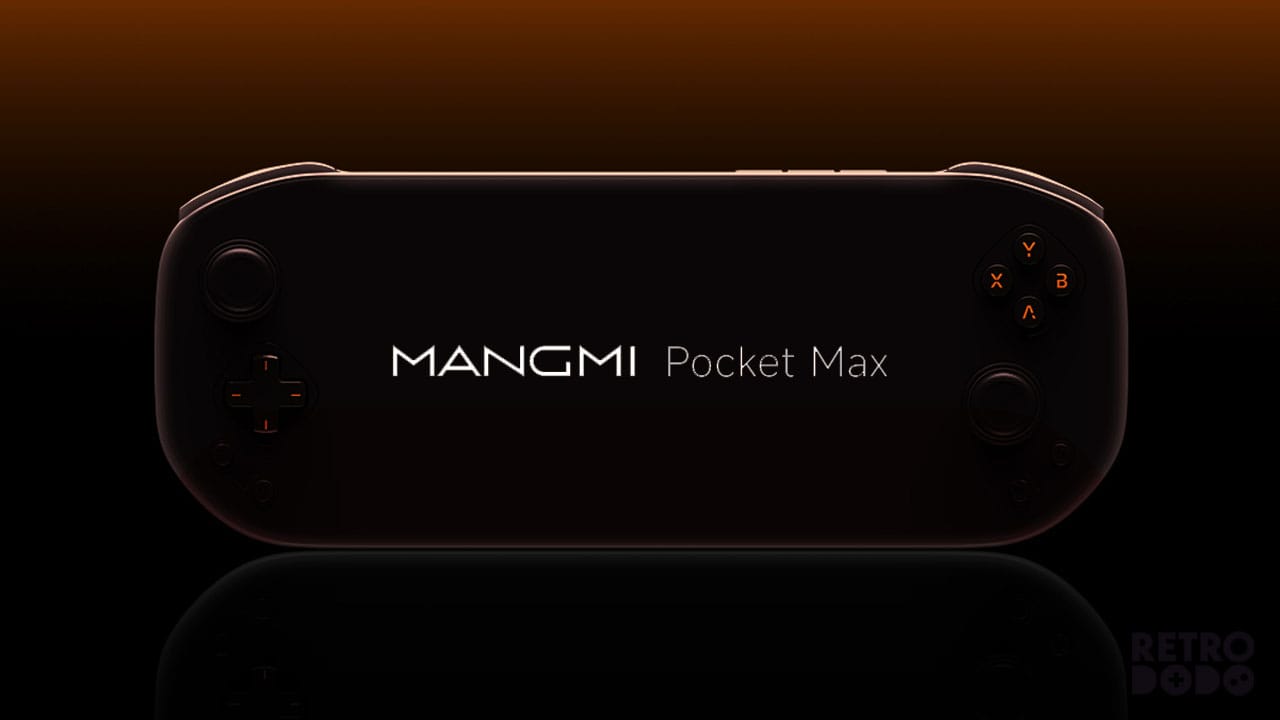Retro Fighters have made it their mission to revolutionise our favourite old consoles, giving us accessories that were a pipe dream while we were growing up. From completely redesigning the shape of classic (but uncomfortable) controllers to giving us wireless options that allow us to play our favourite titles untethered for the first time, they provide retro gamers like us with a whole new experience that we longed for back in the day. I recently reviewed their BattlerGC Pro controller for the GameCube and loved every second it was in my hands, but will their newest offering, the D6 Fighting Gamepad for the Dreamcast, impress me as much?
The original Dreamcast controller was never something that you might call lightweight, and as you had to play it plugged in like a massive muggle, you couldn't exactly kick back and relax on your sofa like we all do today. I think that's one of the reasons why I constantly have numb legs from years of siting cross-legged on the floor near the TV, or as I like to call it, extreme character building.
Thanks to Retro Fighters for sending us the D6 to review. As always, my opinion is wholly my own and the result of using the controller practically with my own consoles. So, without further ado, let's get stuck in and test it out!
The D6 Fighting Gamepad is a well-designed controller that instantly reminds of Floyd the robot from Jet Force Gemini. It's lightweight, easier to hold than the Dreamcast controller, and connects up to the Dreamcast incredibly easily. The D-Pad will definitely divide gamers, however; it makes games like Sonic Adventure a little harder to navigate but works perfectly with the side on fighting and run-n-gun titles it's designed for, so not a wireless controller to completely replace your Dreamcast gamepad.
- Price: $49.99 (Around £40.00)
- What’s In The Box – D6 wireless controller, 1 Dreamcast dongle, 1 USB dongle, Pin Badge, Instruction Manual, USB-C cable
- Dimensions: 6 inches long x 5 inches wide x 2 inches high
- Connection Type: 2.4GHz
- Compatibility: Dreamcast, Nintendo Switch, PC.
- Available From: Retro Fighters
Hands-On With The D6 Fightpad From Retro Fighters
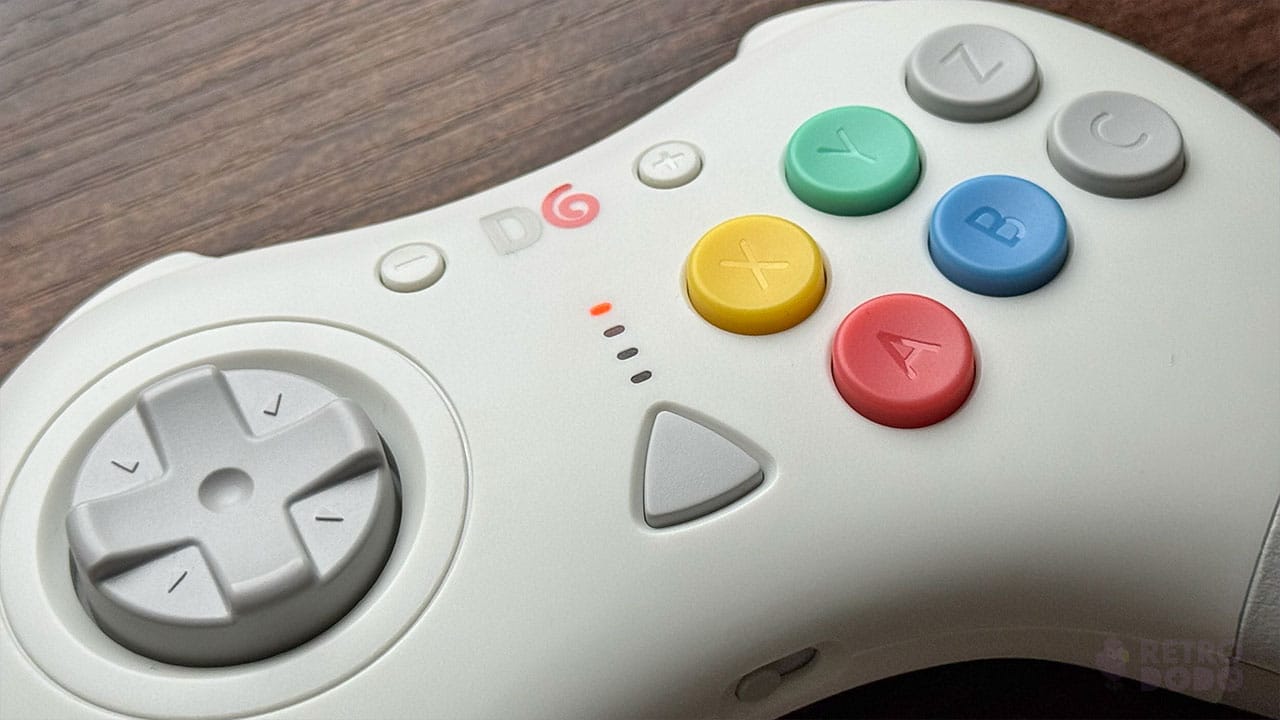
First thing's first - this is one beautiful looking controller. As I said in the review box above, it instantly makes me think about Floyd the Robot from Jet Force Gemini, which while not a Dreamcast title is still a plus point that brings back some amazing memories. I actually had this controller next to my 8BitDo Sega Saturn keyboard while I was reviewing this controller and the color schemes matched perfectly, so at least it looks at home in my office. I also love the adaptation to the Dreamcast logo turning it into a 6 - it's a slick touch that shows Retro Fighters care about making peripherals fit in with console branding and look like they always belonged next to your machines.
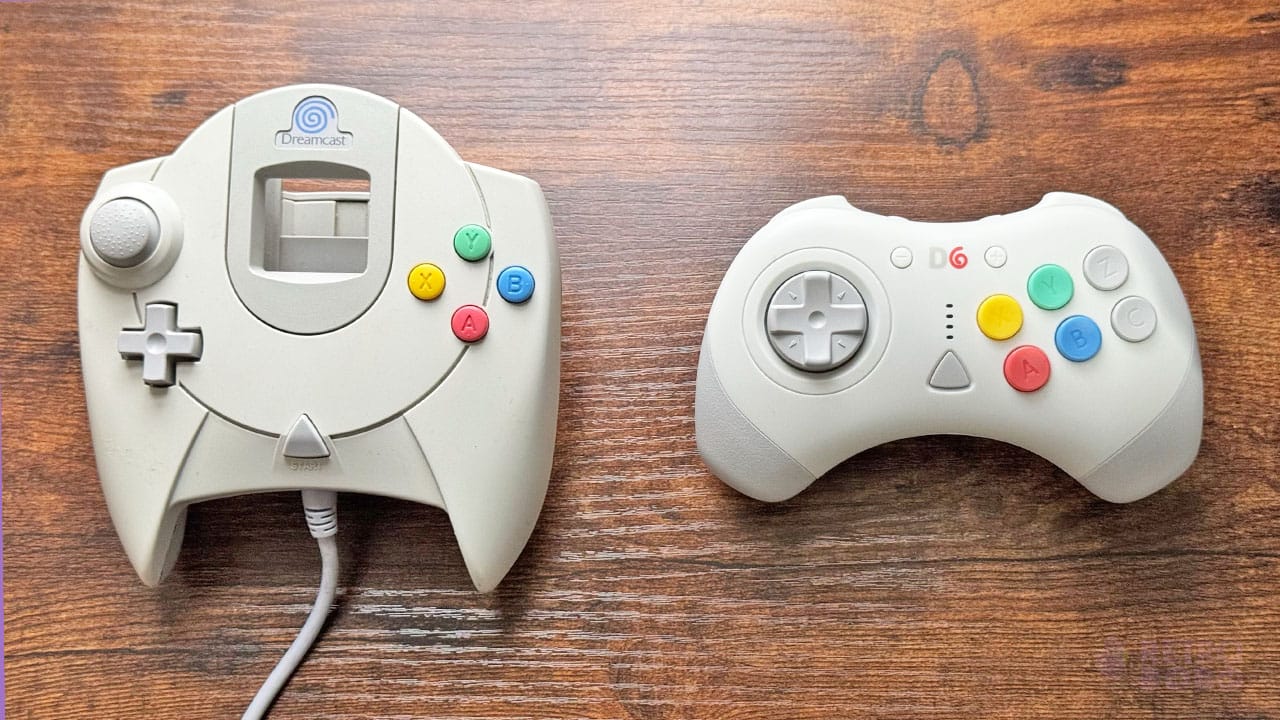
The controller has 6 face buttons - the four coloured buttons from the Dreamcast controller (comparison coming up soon) and a C & Z button to match the Sega Arcade Pad, all using Kailh® micro switches. The colours are all the same as used on the Dreamcast controller too - attention to detail is important! I actually prefer the buttons on the D6 as they feel more like the Mega Drive's controller and are much better for button-mashing.
They all look like they belong too; I've always felt that the Y and A buttons looked a little odd on the curved line of the console, but the uniform lines on the D6 are very pleasing. The Plus and minus buttons on the front face are there for using with your Switch, and the Start button matches the original design from the Dreamcast's gamepad, and they're also used for button mapping and selecting different layouts for different fighting games. You can find all of the information on these layouts in the included quick-set-up guide, so make sure to keep it handy.
The controller has slightly-textured grips that stop it from slipping out of your hands. Colour-wise, they match the plastic used on parts of the original controller and complement the fresh-white look of the main body of the pad. One thing I will say is that the controller will probably suit people who have spent a lot of time playing Sega's back catalogue of consoles or grew up playing Snes games. If you've spent a lot time playing with Pro controllers, then the shorter grip style might take a little getting used to, but retro muscle-memory kicked back in for me right away so I didn't have any issues.
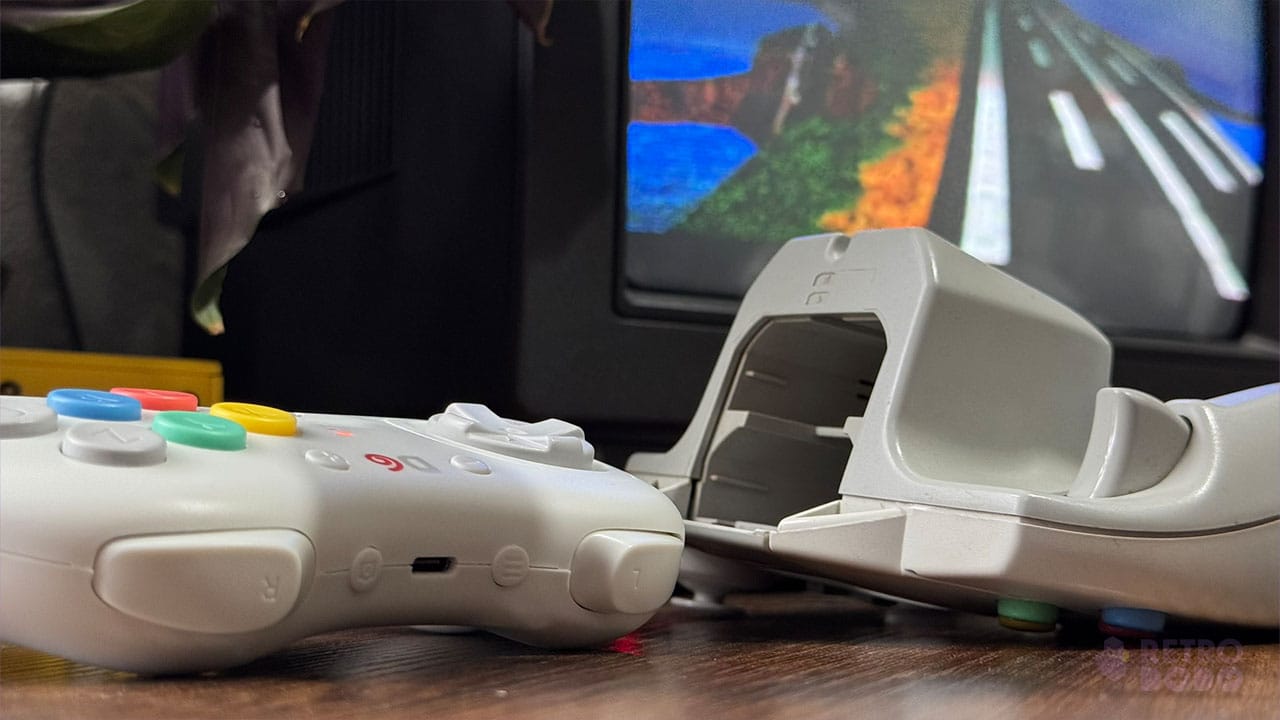
The L and R triggers that were on the back of the Dreamcasts standard controller are now shoulder buttons that feel more like the SNES remote, designed for quick tapping as opposed to pulling back like you're pumping zombies full of lead. You'll also find a photo capture button on top, again for using with the Switch, and a pairing button that's super simple to use. When it comes to hooking up to consoles, I've got no complaints whatsoever, but some people have definitely had mixed thoughts about one aspect of the controller...
The Divisive D-Pad
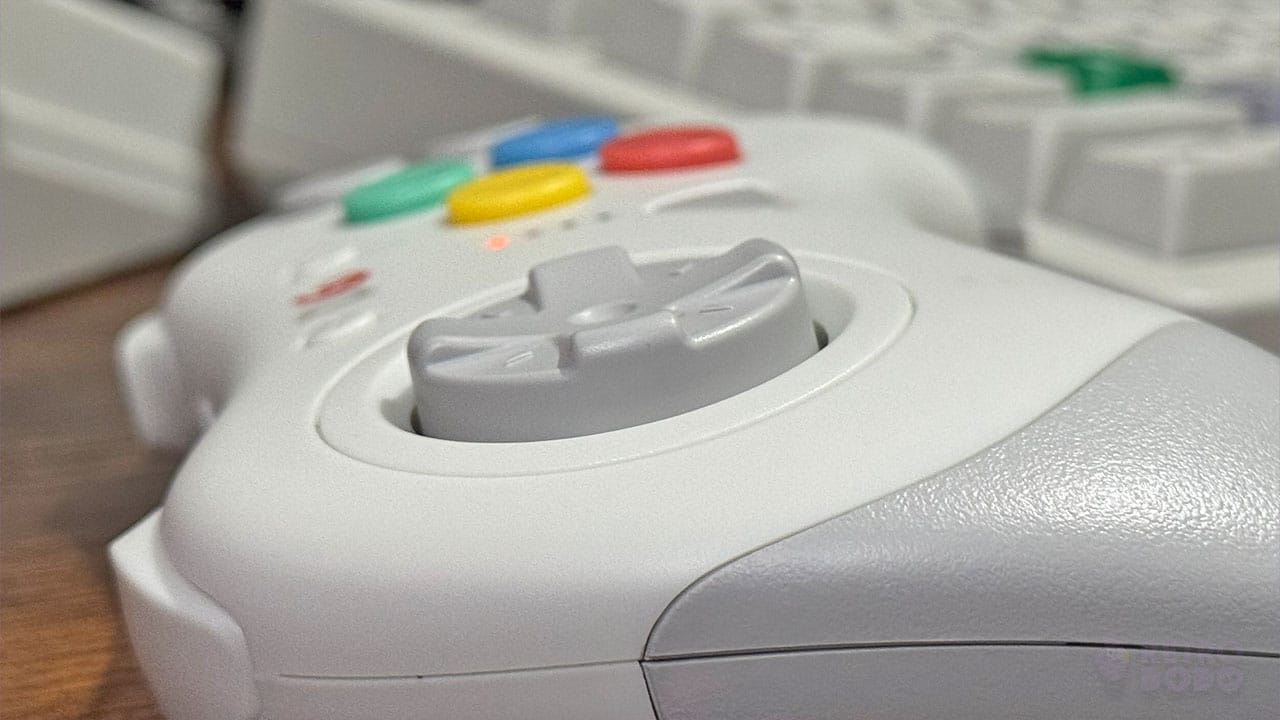
Coming from a world of playing games like Mortal Kombat and Street Fighter 2, I'm no stranger to mashing a D-pad or running my thumb from down to left to pull off a well-timed move to send my opponent into the dust. This gamepad was built for those types of moments and isn't, in my opinion, something you would use for precise gaming. I've tried using this controller with Sonic Adventure to see how much of an all-rounder it is, as any controller that can be used for multiple systems has the potential to be someone's next 'go-to gamepad'.
The clue really is in the title - this is a fighting gamepad meant to complement the Retro Fighters StrikerDC Wireless Remote which provides a much higher level of control thanks to the inclusion of the analog stick. Sonic moves much smoother with an analog stick and is less jerky, but when you're playing 2D Sega titles on the Switch or fighting games that don't require complex movements bar left and right, it's a great choice. Whether spending $49.99 on a controller that boasts a D-pad made for fighting games is a good idea will all come down to how many games you play - it's certainly a great investment if they're your favourite titles of if you mainly play Sega Mega Drive titles on the Switch!
So how to you deal with the lack of an analog stick? The controller has a small switch on the bottom that can be toggled left and right to choose from three different D-pad modes - left stick, right stick, and D-Pad. If you're wanting to use this remote for games with exploration or that require the analog stick, then you'll need to have it switched to the left like I have in the pictures below. The instruction manual also includes the button mapping guide and tells you how to switch between different modes.
Connecting Up To Your Devices
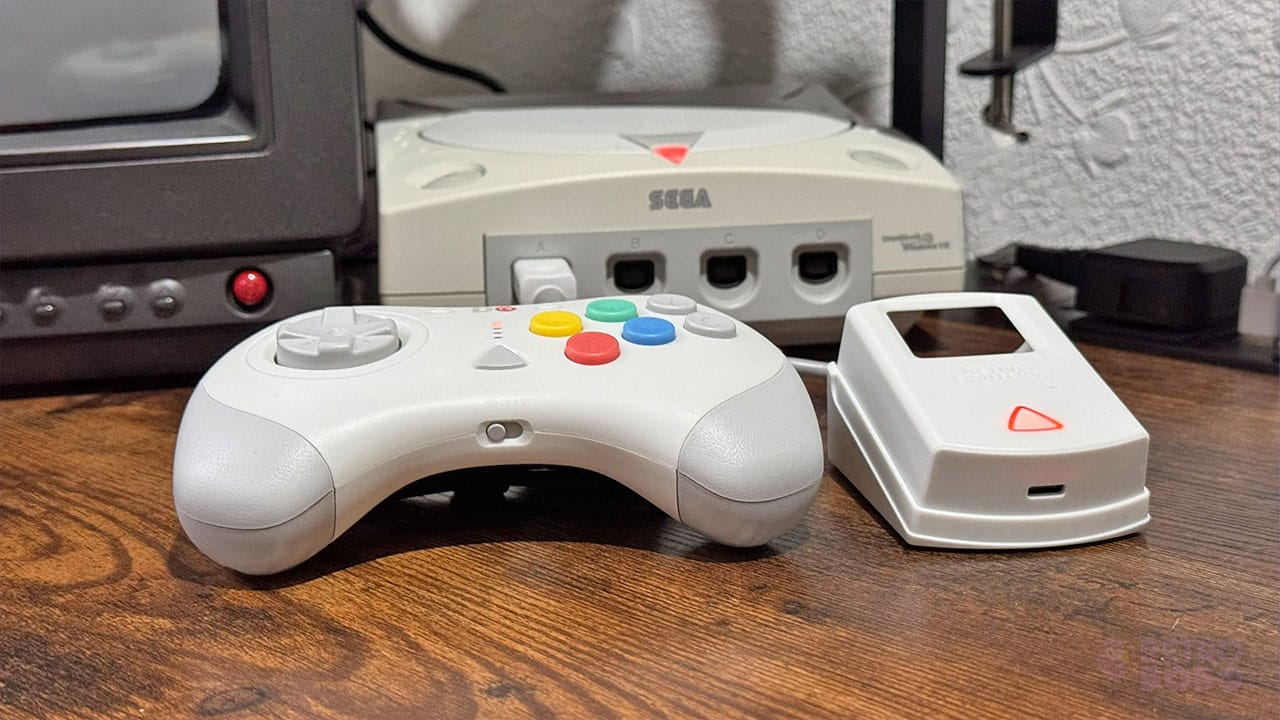
Wireless controllers are all well and good, but if they require a degree in neuroscience to set up, then the only place they're going is in the bin. Luckily, the D6 takes seconds to set up which has made this whole process even more enjoyable. It comes with two dongles for 2.4GHz connectivity; one for the Dreamcast that has space for the VMU or the 8BitMods VMU Pro to sit inside, and a USB receiver for slotting into your Switch dock or PC. The Dreamcast receiver also has rubber pads on the bottom to stop it from slipping around, a nice feature that I hadn't thought about but one that is definitely appreciated. Also this controller is 2.4GHz only and doesn't have any Bluetooth connectivity, so that's worth noting before you buy.
In both cases, all you need to do is press the pairing button on either dongle followed by the pairing button on the controller. When the flashing light turns solid, the controller is connected. The D6 connected up to both my Dreamcast and Switch in seconds with the light popping up at the top of the controller to signify I was Player 1, something that I wish the Battler GC Pro did rather than showing player order in reverse. The controller is extremely responsive too with speeds of 1.95ms while wired and 5.03ms when in wireless mode. Plus because you can charge via USB you won't have to wait around for hours to get a full charge - if I see a controller with a micro-USB charging slot now I just sit with my head in my hands!
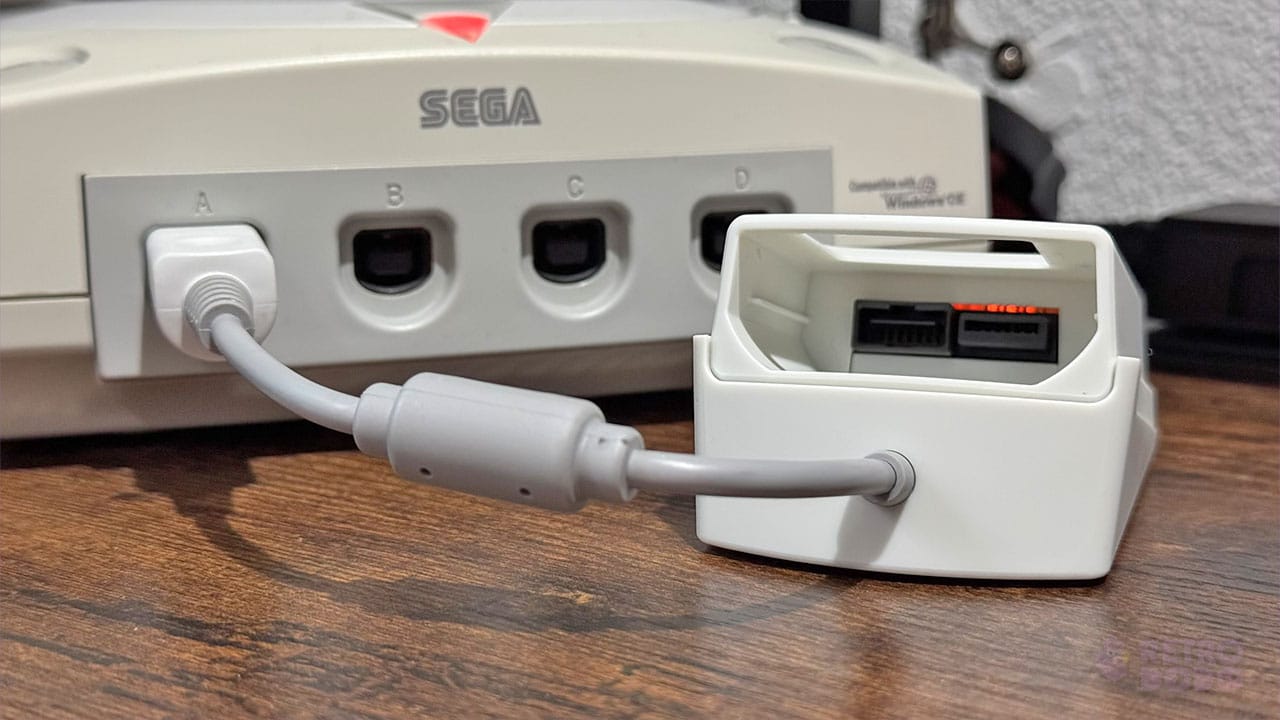
I think the place where this controller and the D-pad really shines is on the Switch, giving players a higher level of precision in games that solely use a D-pad as opposed to analog sticks. I played Gun Star Heroes with it and found it to be much more enjoyable with the D6 than with the Switch Pro Controller. That's probably more because of the nostalgic design of the controller and the button noises taking me back to my youth than anything else, but that's always something that I take into account in my reviews, so it's going down as a plus point!
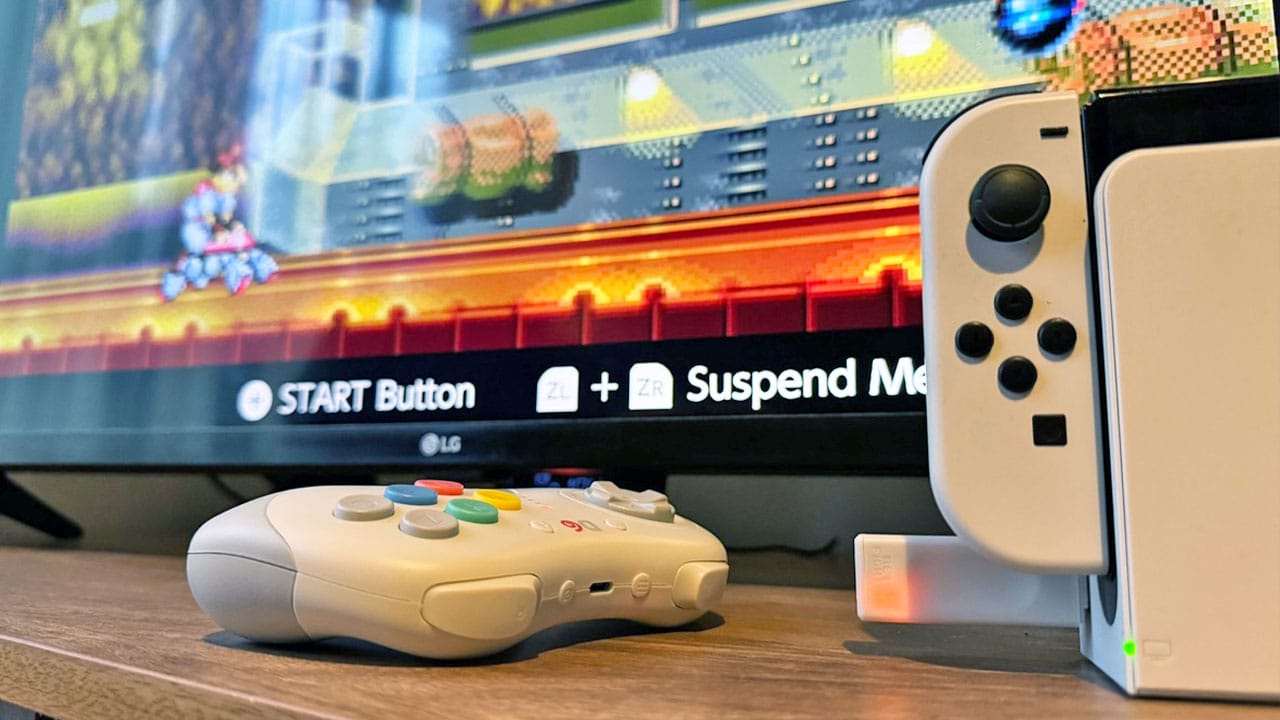
Final Thoughts
- Lightweight controller
- Easy to connect via two included dongles
- Simple to use with multiple D-pad settings with space for the VMU when connected to the Dreamcast.
- Nostalgic loud buttons
- The D-pad makes playing games like Sonic Adventure a little tricky - this is very much intended to be a gamepad for fighting and 2D titles.
- Those used to controllers with larger grips might find it a tad hard to hold, but it's fine if you grew up with the SNES and Genesis.
The D6 is a well designed controller that feels nice in the hand and and hooks up to the Dreamcast in seconds. They are two things I would expect immediately from any wireless controller, especially from Retro Fighters, and I wasn't disspointed. As I've said above, I think it's better suited to the retro collections on the Switch unless you specifically solely play fighting games on the Dreamcast.
If you're a fighting game aficionado then it will feel like a dream come true; the controller is literally advertised as a fighting gamepad so it does what it says on the tin and would be perfect for games like Street Fighter Alpha 3. In my opinion the D-pad makes movement on adventure games fell a little more laboured, so that's something to bear in mind if you are looking for an alternative to the StrikerDC!

